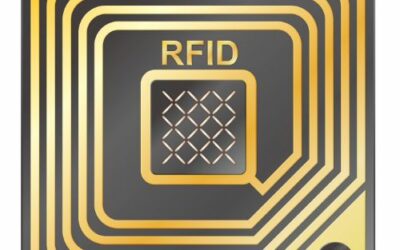Asset tracking works best when a mix of technologies are used together. As a general rule, the more automated and regular the updates are, the higher the cost. This means that it doesn’t make sense to have automatically updating location trackers on low value tools. Equally, using QR code asset management for vehicles that move around a lot is not a fit-for-purpose solution.
When developing your asset management infrastructure, you will need to consider the best mix of trackers for your set-up. To do so, you’ll need to get a strong understanding of QR and GPS tracking.
What is QR Tracking?
QR code asset management has become a familiar part of the modern world. The technology forms a major element of many organisation’s asset tracking systems. QR codes are made up of dots and black squares. These are unique patterns that represent sets of information,
After they are scanned, the information is transferred into a human readable state. In the case of asset tracking, the data is sent back to a central database that is accessible via an intuitive software.
QR Codes: Static vs Dynamic
There are two main types of QR tracking. Static and Dynamic. The information held on Static QR codes can not be changed. This makes them a perfect solution for storing fixed data. Information like where the equipment should be stored, when it was purchased, manufacturing information and the like.
Dynamic tags are far more flexible. With dynamic tags, the info isn’t ingrained into the code. The information can be updated as many times as required. For example, you could upload and subsequently change the maintenance schedule of an asset, and the scanner would take you to a webpage that shows you the most current information.
QR Tracking Strengths and Weaknesses
This approach is flexible and cost-effective. Using dynamic QR codes with a powerful software solution means you can update asset information at a click of a button. The physical tag can be printed on durable materials like vinyl and metal. So, they can be added onto most assets and be relied on to last.
However, QR codes require a manual scan to update a central database. They must also be visible so that they can be scanned. This means there is a risk that they can be tampered with or become unreadable over time. RFID tags do not need to be visible, so they are generally a better solution if you need to hide your tags.
The other key drawback of QR tagging is that they cannot give any information on the location of the item. That’s where GPS tracking comes in.
What is GPS Tracking?
Like QR tracking, we are all using GPS tracking in our daily lives all the time. Most people have an awareness of how this works. GPS stands for ‘Global Positioning System.’ GPS trackers are linked to a series of satellites which send a signal that let us know the location of the tracked object. There is a tracker in every smartphone and SatNav.
The business applications are vast, and being put to use by the majority of relevant companies in one way or another.
When it comes to asset management GPS trackers are most commonly installed in vehicles. This way, organisations can keep track of where their vehicles are at any given time. This makes it possible to improve customer service and increase productivity.
However, this is not the only application of GPS technology. Trackers can be added to individual items and scanners which make it possible to find the locations of smaller items that have been checked out of your central storage facility.
Also, you can avoid the need for a GPS tracker by leveraging smartphones or tablets.
GPS Tracking Strengths and Weaknesses
Unlike QR tracking, GPS tracking is automatic. So, you don’t need to rely on manual input to access up-to-date information. Trackers send a ping at regular intervals. This is often about 15 minutes but can be set to suit your needs.
The other glaring benefit of GPS tracking is that it gives you insight into an assets location. Not only its current location, but where it’s been!
On the downside, GPS trackers are not cheap to manufacture or easy to attach to assets on the fly.
Using QR Tracking With GPS
So, QR vs GPS, what’s the verdict?
Well, in practice, the answer is often- both. GPS trackers are best suited to providing location information. QR code asset management is more flexible in that any information can be transmitted with them, and overwritten at any time. Using a GPS scanner or smartphone with GPS to scan a QR code means that you can combine location information with whatever data is stored.
This combines the flexibility and affordability of QR codes with the powerful geo tracking capabilities of GPS.
Choose itemit to Fully Track Your Assets
itemit works with you to find the right balance between functionality and cost. The goal is to give you control over your business so that you can grow and thrive. No two systems from itemit are exactly the same, but they do have something in common; they find the most cost-effective, fit-for-purpose solution possible.
Book a demo today to see all itemit’s features in action. To find out more details, you can always contact our team at team@itemit.com.
What Is RFID?
Choose a better way to track your assets
Start your free 14-day trial now
Instant access. No credit card details required.
Related articles
How Easy Is RFID Tracking?
Want to try RFID tracking but feeling a little anxious? Read this post now to discover just how easy it is to use an RFID aset tracking system!
How RFID Can Help You To Track Assets
How can an RFID tracking app help you to track all of your assets? Read this post now to find out so you can also track your assets with ease!
How To Get Started With RFID
How does RFID tracking work and how can you begin to get started with it? Read this article as it explains everything you need to know!



